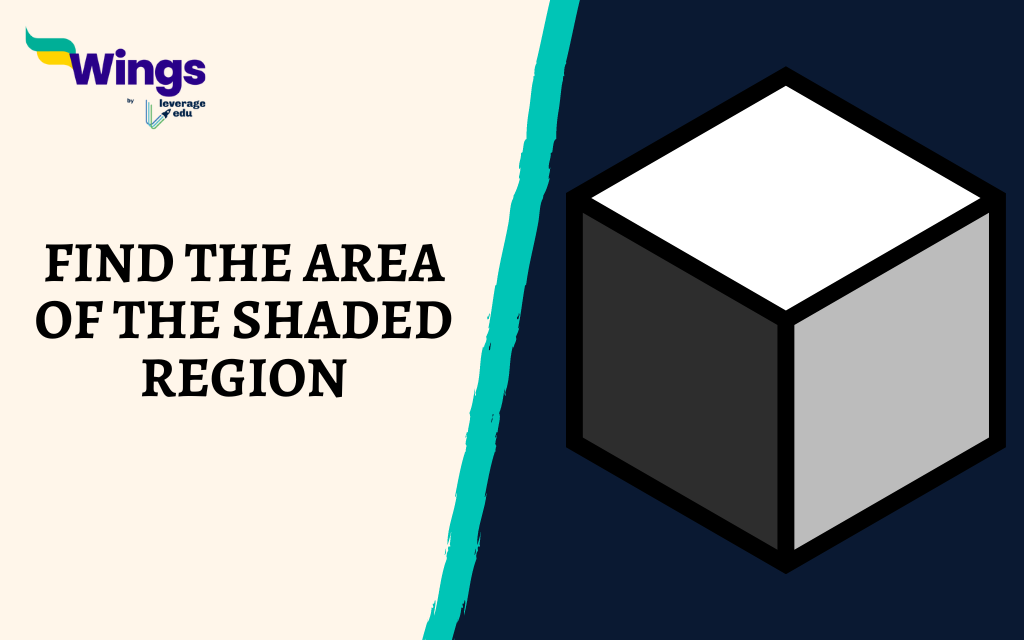When dealing with shaded regions in geometry, finding their area can be a known mathematical problem. Whether it is a square, rectangle, circle, or triangle, you need to know how to find the area of the shaded region. Moreover, these Formulas come in use in different mathematical as well as real-world applications. Read on to learn more about the Area of the Shaded Region of different shapes as well as their examples and solutions.
Contents
What is the Formula for the Area of the Shaded Region?
The formula for finding the Area of a Shaded region depends on the shape of the region. Moreover, here are the basic formulas for some common geometric shapes:
Square:
Area of Shaded Region=Area of Square−Area of Inscribed Shape
Rectangle:
Area of Shaded Region=Area of Rectangle−Area of Inscribed Shape
Circle:
Area of Shaded Region=Area of Circle−Area of Inscribed Shape
Triangle:
Area of Shaded Region=Area of Triangle−Area of Inscribed Shape
Also Read: Area and Perimeter Questions
How to find the Area of the Shaded Region?
Additionally, to calculate the area of the Shaded region accurately, you will need to follow these steps:
- Identify the Shapes: Determine the shapes in the problem, such as squares, rectangles, circles, or triangles.
- Calculate Individual Areas: Find the area of each shape using the appropriate formulas.
- Subtract Areas: Subtract the area of the smaller shape from the area of the larger shape to Find the Area of the Shaded region.
Also Read: What is the Difference Between Volume and Area?
Find the Area of the Shaded Region of a Square
Consider a Square with a side length of 10 units. Inside this square, there is another smaller square inscribed with a side length of 6 units. To Find the Area of the Shaded Region:
- Calculate Areas:
- Area of Larger Square = 10×10=100 square units.
- Area of Smaller Square = 6×6=36 square units.
- Subtract Areas:
- Area of Shaded Region = 100−36=64 square units.
Thus, the Area of the shaded region in this example is 64 square units.
Also Read: Geometry Questions for GMAT Quant Section
Find the Area of the Shaded Region of a Rectangle
Suppose we have a Rectangle with dimensions 12 units by 8 units. Inside this rectangle, there is another smaller rectangle with dimensions 6 units by 4 units. To Find the Area of the Shaded Region:
- Calculate Areas:
- Area of Larger Rectangle = 12×8=96 square units.
- Area of Smaller Rectangle = 6×4=24 square units.
- Subtract Areas:
- Area of Shaded Region = 96−24=72 square units.
Thus, the Area of the shaded region in this case is 72 square units.
Also Read: Curved Surface Area of Cylinder: Formula, Examples
Find the Area of the Shaded Region of a Circle
Imagine a Circle with a radius of 5 units. Inside this circle, there is another smaller circle with a radius of 3 units. To Find the Area of the Shaded region:
- Calculate Areas:
- Area of a Larger Circle = 𝝅 ✕ 52 = 25𝝅 square units (using the formula 𝝅r2 ).
- Area of Smaller Circle = 𝝅 ✕ 32 = 9𝝅 square units.
- Subtract Areas:
- Area of Shaded Region = 25𝝅 – 9𝝅 = 16𝝅 square units.
Hence, the Area of the shaded region in this instance is 16𝝅 square units.
Also Read: 40 + Area and Perimeter Questions with Answers
Find the Area of the Shaded Region of a Triangle
Consider a Triangle with a base of 10 units and a height of 8 units. Inside this triangle, there is another smaller triangle with a base of 6 units and a height of 4 units. To calculate the Area of the shaded region:
- Calculate Areas:
- Area of Larger Triangle = ½ ✕ 10 ✕ 8 = 40 square units.
- Area of Smaller Triangle = ½ ✕ 6 ✕ 4 = 12 square units.
- Subtract Areas:
- Area of Shaded Region = 40 – 12 = 28 square units.
Therefore, the Area of the Shaded Region is 28 square units.
Also Read: Cross-Sectional Area of Different Shapes with Formula
Related Blogs
I hope this helps! Did you like learning about the finding of the area? Keep reading our blogs to learn more about the Basic Concepts of Maths!
 One app for all your study abroad needs
One app for all your study abroad needs














